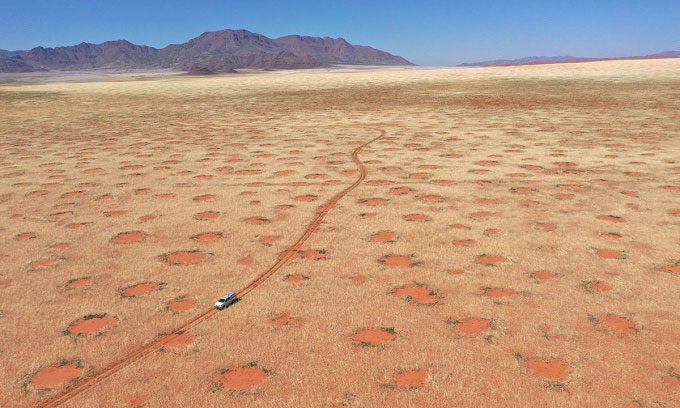Experts Use Satellite Images and AI to Map 263 Mysterious Circular Structures Found in 15 Countries Across 3 Continents.
The arid lands of Namibia and Australia are home to mysterious circular vegetation structures that contain bare patches of earth, puzzling scientists for decades. These strange structures are known as “fairy circles.” A new study published in the journal PNAS on September 25 aims to provide new insights into their formation and locations.

NamibRand Nature Reserve with fairy circles. (Photo: Stephan Getzin).
“There are many hypotheses regarding the formation of fairy circles, for example, that they originate from the self-organization of vegetation. Social insects like termites, which build nests at certain intervals, could also create fairy circles. Another hypothesis points to the toxic sap of Euphorbia—a genus of succulent plants,” said Emilio Guirado, an expert at the University of Alicante in Spain and a member of the research team.
Previously, scientists had only confirmed the presence of fairy circles in Namibia and Australia. “We wondered whether fairy circles exist in many other places beyond those observed in Namibia and Australia. Therefore, we established a model based on artificial intelligence (AI) to observe hundreds of thousands of hectares from space,” Guirado explained.
Ultimately, Guirado and his colleagues identified 263 fairy circles in 15 countries across 3 continents. Further analysis indicated similarities in environmental conditions at these sites, such as aridity, temperature, low soil nutrients, and high sand content. However, the locations also exhibited some differences. This suggests that fairy circles may form in different ways at various locations.
Map of fairy circles viewed from space. (Video: Newsweek).
“I think the world can be complex, and all hypotheses regarding the formation of fairy circles may play some role, depending on the location or time. Perhaps all are valid where they are studied, and some hypotheses could interact at certain places. For example, our results show that the role of termites in Namibia is more significant than in Australia or the Sahel region,” Guirado explained.
Further research is needed to confirm these hypotheses. Guirado hopes that the global map of fairy circles they created will be useful for future studies.
“We hope that the information we published in the study can provide scientists around the world with new research directions to help unravel the puzzles related to the formation of fairy circles. For instance, this information could open opportunities to study how fairy circles could serve as indicators of ecosystem degradation due to climate change,” Guirado stated.


















































